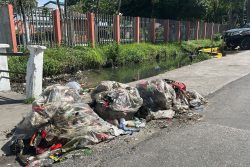Rice production is poised to exceed this year’s 450,000 tonnes target, according to Agriculture Minister Dr Leslie Ramsammy, who says that the current second crop has shown that the paddy bug has had very little impact.
In Essequibo alone, 10 to15 percent of the fields have been harvested and the agriculture ministry is reporting that damaged paddy is less than five per cent, according to the Government Information Agency (GINA). For 2012, rice production was the highest it had ever been, sitting at over 422,000 tonnes. Ramsammy, who noted that the second crop harvest has just begun, told GINA that weather has had a huge impact on the industry. He noted that while the first crop’s production exceeded 263,500 tonnes, it could have been as much as 300,000 tonnes had it not been for partial drought conditions and paddy bug.
During the first crop, Essequibo rice farmers were leery about a paddy bug infestation. Farmers had previously told Stabroek News that going into the second crop they had increased their use of pesticides and also their irrigation works. Farmers were also concerned about a possible snail infestation due to compromised field irrigation systems.
For the second crop, the ministry is expecting that over 220,000 tonnes will be harvested from the 75,000 acres planted. The first crop’s figures were a result of 82,000 acres of cultivated land.
Meanwhile, General Manager of the Guyana Rice Development Board (GRDB) Jagnarine Singh told Stabroek News that as of last week over 8,400 acres of the second crop had already been harvested out of the 75,000 acres planted.
Preliminary harvesting had shown that the yield per acre is approximately 35 bags of paddy.
Singh told Stabroek News that in Essequibo, the grade of paddy being taken to mills is above and beyond expectation. “What we are seeing was that 84 percent of the paddy was grade A to C, which is excellent,” he said. Like Ramsammy, Singh added that the paddy bug scare that could have potentially destroyed the second harvest crop has so far seemed to have little impact. He said that it was still early in the second crop to fully asses how bad the paddy bug infestation is, the grades of paddy entering the mills should be a reflection of the crop as a whole.
Singh said that the Essequibo farmers were the most concerned with paddy bug and their crop seemed to be safe from contamination. He too noted that the harvest had just started and the farmers, the Agriculture Ministry and the GRDB have to remain optimistic.









